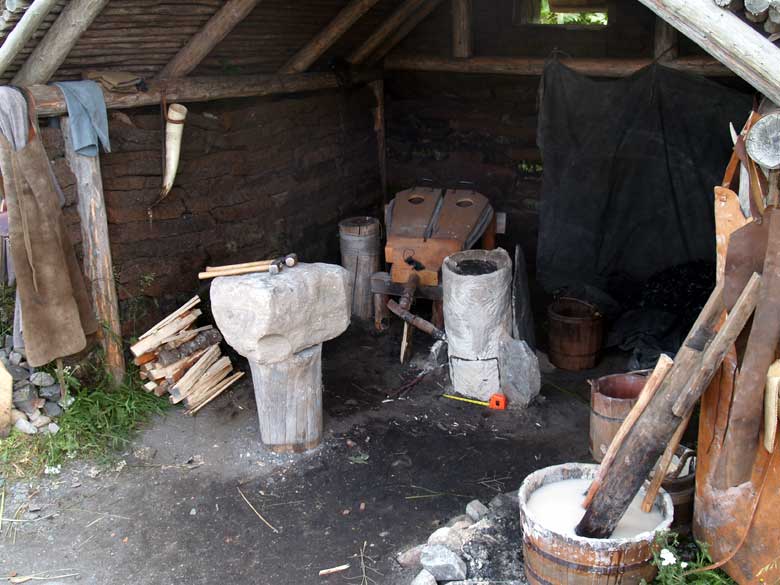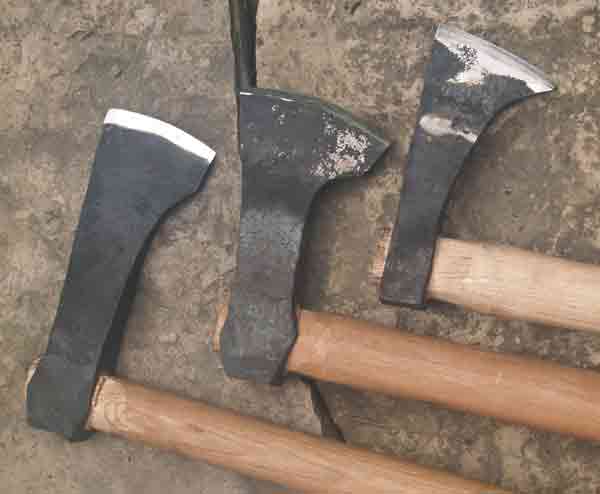Shel, on 15 Dec 2013 - 13:17, said:So, one last question Darrell. Was all of this, in your thoughts, much as was the iron making efforts at Jamestown, an expedition looking for useful resources?
To keep to the question (at least to start...)
A larger consideration of just what Leif Eirikson was attempting with his voyage(s) is critical to placing the whole Vinland adventure into a meaningful context.
His father, Eirik the Red, was described in the Sagas as first exploring, then organizing and establishing the *successful* Greenland colony : 'So he could be chieftain, and then himself be the one who decided who would be banished or not'. Remember that Eirik was called 'the Red' for his considerable violent temper, which had lead to 'killings' in both Norway, then Iceland, resulting in banishment from both.
Leif would have been a younger man on both these moves (Norway / Iceland / Greenland), and certainly serving as a second in command for the Greenland exploration and later colony establishment. The Greenland Norse certainly knew that there was territory to the west, unexplored but certainly glimpsed by travelers storm tossed on Iceland to Greenland voyages. The Saga tales certainly paint a picture of a family well known for exaggerate, bold in action, and seeking to establish their fame (and power). It would be perfectly natural for Leif to want to explore and place his hand print on new lands - and perhaps be just a wee bit 'generous' in his descriptions.
First thing to remember is that 'Vinland' is a *region* - not a single isolated place. When Leif speaks of his 'Land of Vines', he is in reality speaking of the entire modern Gulf of St Lawrence area of Canada. Newfoundland, the North Shore of Quebec, NE shore of New Brunswick. This last is proven by the find of three butternuts at LAM, a tree that has never grown further north than modern day New Brunswick. Significantly, wild grapes also are found in the same areas (grapes have never grown in Newfoundland).
The comparison here would be L'Anse aux Meadows is to Vinland as Jamestown would be to greater Virginia.
Unlike Jamestown, Leif never attempted to colonize Vinland, and 'Leif's Houses' at L'Anse aux Meadows is not a colony. The correct way to think of the place is as an outpost, a combination exploration base and lumber camp. Although there are hints in the Sagas that a farm settlement might have been attempted, the truth is that the young Greenland colony still had good land available, and itself was too small a population to support the effort needed.
Although the climate in Greenland (and throughout Northern Europe) was warmer in the Viking Age and Early Medieval periods, there was never any supply of timber on Greenland itself. Timber was needed to build houses in the Norse longhouse style, and also for ship construction. It has been demonstrated via dendrochronology that many of the building timbers used in Greenland over its 400 year active Norse occupation were in fact cut in what was called Markland (modern day Labrador)
Unlike Jamestown, Leif's Vinland explorations were never intended as a commercial venture. The mechanic is more likely that individuals would have taken part on the voyages, trading their labour against a share of the actual logs harvested. Back to Greenland, they would then be able to build houses on their own farm holdings for growing families.
As with Jamestown, it is most likely (and my opinion, now shared by Dr Wallace) that the single iron smelt at LAM represents a resource test. A factor to consider is that although there is primary bog iron ore on Greenland, there is no wood suitable to generate the large volumes of charcoal required for bloomery iron smelting . Iron objects would remain one of the primary imports into Greenland for the entire life of the settlement.
It would be natural for Leif, eager to brag about the excellent qualities of his discovered lands, would want to add 'everything to make good iron' to the list. The fact that iron was *not* included to the list of : timber, fish, grain, grapes may be more significant.

Before the 2010 demonstration smelt - inside the reconstruction of the 'Furnace Hut' at LAM
The Norse at Greenland did go to the (considerable) effort of building a dedicated structure to house the iron smelting effort. The archaeologists kind of glossed over this labour, with a kind of 'of course they would do so'. Truth is that the weather at LAM is not *that* foul, and our own experience has certainly proven you can build a small bloomery furnace one day, then fire it the next. Couple this with the small amount of physical remains certainly suggesting only one smelt attempt was undertaken. Perhaps they had fully intended more production, but that first attempt was so marginal that they never duplicated the effort? Some things we can never really know.

No comments:
Post a Comment